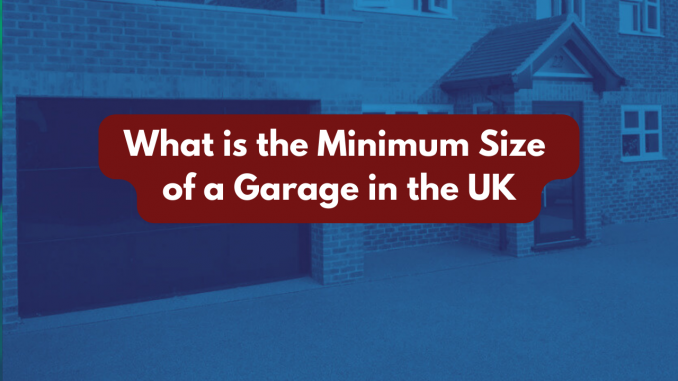
Unlike the size of a bedroom , there is no specific minimum size requirement for a garage in the UK set by national regulations. However, local planning authorities and building control departments may have their own guidelines or restrictions regarding garage sizes.
In many cases, the size of a garage is determined by practicality and the intended use.
Single Garage Size in the UK
A single-car garage is typically around 8 to 9 feet wide and 16 to 18 feet long (approximately 2.4 to 2.7 meters wide and 4.9 to 5.5 meters long).
Double garage size in the UK
A double-car garage is around 16 to 18 feet wide and 16 to 20 feet long (approximately 4.9 to 5.5 meters wide and 4.9 to 6.1 meters long).
However, these dimensions can vary based on the local regulations and the specific property.
To determine the minimum size of a garage in your area, it’s essential to check with your local planning authority or building control department. They will have the most up-to-date information on any size requirements or restrictions that apply to garage construction in your specific location.
What to consider when building a garage
Constructing a garage on the side of your house can be a valuable addition, providing convenience, extra storage space, and potentially boosting your property’s value. However, before starting this exciting project, there are several essential factors to consider to ensure a successful and compliant construction process. In this blog post, we will explore the key aspects you need to keep in mind when planning and building a garage on the side of your UK home.
Local Planning Regulations
The first step in building a garage is to familiarise yourself with local planning regulations. The UK has strict guidelines concerning property development, including garages. Check with your local planning authority to determine if you need planning permission for the proposed structure. In some cases, permitted development rights may apply, allowing you to build without planning permission, provided you adhere to specific criteria such as size, height, and location.
Purpose and Size
Clearly define the purpose of your garage before designing it. Will it primarily serve as a secure parking space for your car, or will it also serve as a workshop or storage area? Understanding the intended use will help determine the ideal size and layout. Consider the dimensions carefully, ensuring it is spacious enough for your car(s) and any additional items you plan to store.
Location and Access
Choosing the right location for your garage is crucial. Analyse the available space on the side of your home, considering factors such as accessibility, visibility from the road, and its impact on your property’s aesthetics. Ensure that the garage’s entrance aligns with your driveway for easy access and manoeuvrability.
Can building a garage door be part of your tax deduction?
Access points need to be determined before you start building. On top of a garage door that aligns with your driveway, consider if you need a garage side door at the back or the side for quick access into and out of the garage. “
Design and Materials
Choose a garage design that complements the architectural style of your home. Whether you prefer a traditional look or a modern aesthetic, choose materials and finishes that harmonise with your property’s overall appearance. Additionally, select durable materials that can withstand the UK’s varying weather conditions and provide adequate insulation to protect your belongings.
Foundation and Construction
Solid groundwork is vital for the stability and longevity of your garage. Consult with a qualified contractor or engineer to determine the appropriate foundation type based on your soil conditions. Be mindful of drainage to prevent water pooling around the structure.
Lighting and Security
Plan the garage’s lighting carefully to ensure proper visibility and safety during nighttime use. Consider installing motion sensor lights to save energy and deter potential intruders. Security should be a top priority, so invest in robust locks, an alarm system, and possibly security cameras to protect your vehicles and belongings.
Ventilation and Climate Control
Proper ventilation is essential for preventing moisture buildup and maintaining air quality within the garage. Consider adding vents or garage windows that can be opened to allow fresh air circulation. If you plan to use the garage for extended periods, think about climate control options like insulation, heating, or cooling, depending on the weather conditions in your region.
Building a garage on the side of your home in the UK can be a rewarding project, but it requires careful planning and adherence to local regulations. Consider the purpose, size, location, design, and materials to create a functional and visually appealing structure that adds value to your property. Prioritise safety, security, and proper ventilation to ensure a comfortable and protected space for your vehicles and belongings. By taking these factors into account, you can successfully construct a garage that complements your home and enhances its functionality.


Leave a Reply